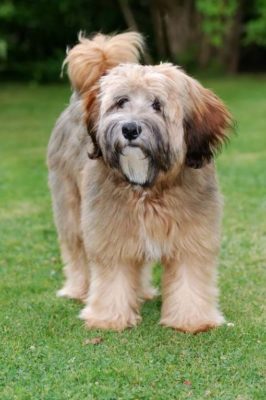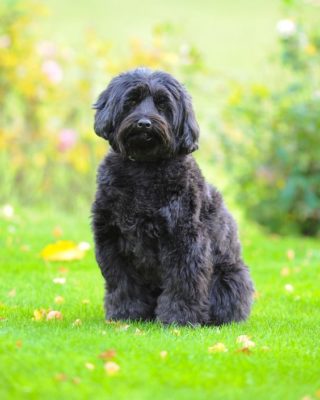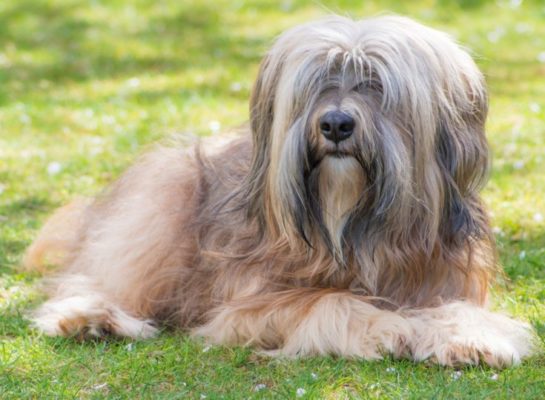Tibetan Terrier
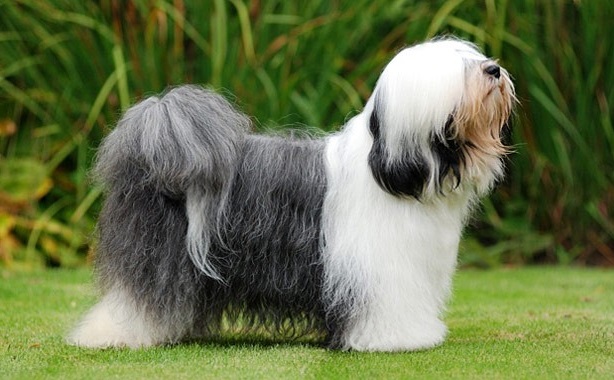
What separates Tibetan Terriers from other breeds is their friendliness and obedience. They are good-natured by nature. It is almost unreal to meet an aggressive Tsang Apso. It is possible in the case of late socialization of the animal. Dogs are ideal as pets. They get along well in apartments and homes with children and other animals. Tibetan Terriers know their worth.
Table of Contents
Breed Information
| Another Name | Tsang Apso, Dokhi Apso |
| Origin | Tibet |
| Height | Males 36-41 cm Females 32-39 cm |
| Weight | Males 9-13 kg Females 7-10 kg |
| Fur | Long |
| Color | White, black, gray, tiger, golden, piebald, tricolor |
| Lifespan | 12-15 years |
| FCI Classification | Companion and Toy Dogs |
| Group | Small breed or decorative dogs, guard dogs, dogs for children, dogs for apartments |
| Price | From $1200 |
Breed Photos
Origin History
Tsang Apso are not terriers at all. They were so nicknamed by Europeans, to whom the dogs reminded regular terriers. In their homeland, they were Tibetan Apso. The monks, who believed in the sacredness of animals, bred them. They were convinced that Tibetan Terriers protected against evil spirits. For the population to receive a gift of a breed representative seemed to be a message from above. Ostensibly, the gods thus protected them from dark forces. Some scholars speculate that the breed may have first originated in India or China.
For a long time, exporting Tsang Apso outside Tibet was punishable by death. The first specimens in Europe appeared in the 20th century. A British doctor, Agnes Greig, founded the first association of breed lovers. He received a puppy as a token of gratitude from a Tibetan monk. Greig saved his wife from death. Interestingly, modern Tibet gives representatives of the breed to tourists who could conquer difficult mountain peaks. International recognition Tsang Apso received in the second half of the twentieth century. But to this day they are considered a rare breed.
Appearance
Because of the thick and long coat, many people do not notice the muscular and strong physique. Endurance dogs help to overcome mountain peaks, slopes, and cliffs. A variety of colors are allowed: black, white, gray, golden, tiger, etc. Only the liver color is not recognized.
The head of the representative of the breed is small with a small muzzle. The jaw is well developed. The lower part is covered with hair and creates a beard. The nose is black or in the color of the color. The brown eyes are rounded in shape. The floppy ears are covered with long wool, due to which they are poorly visible. The tail is medium length, set high.
Character
What separates Tibetan Terriers from other breeds is their friendliness and obedience. They are good-natured by nature. It is almost unreal to meet an aggressive Tsang Apso. It is possible in the case of late socialization of the animal. Dogs are ideal as pets. They get along well in apartments and homes with children and other animals. Tibetan Terriers know their worth. They will not beg for attention and whine underfoot. At the same time, adult representatives of the breed do not tolerate a long absence of the owner or a change of residence.
Dogs are well developed intellectually. They love games, active training. They remember new commands with ease. They can be taken on a hike or go on an active vacation. Despite this, maturation of the breed occurs late. Dogs are considered adults after two years of age.
Care
In terms of grooming, Tsang Apso are not the easiest dogs to take care of. However, shedding is easier than for other dogs. To keep their coats looking luxurious, you will have to comb them daily or every other day. Pay special attention to the ears and paws. Tibetan Terriers do not tolerate the heat well. Therefore, it is recommended to cut the hair shorter in summer. The coat is fully formed closer to 13 months of age.
After a walk, inspect your pet for ticks, debris, and grass. Clean ears with cotton pads once a week and wipe eyes with a tampon of warm water. Cavities are common in the breed. We recommend getting a special bone that will clean the teeth while chewing. If plaque is heavy, use a toothbrush without additional tools. Use a claw trimmer or file once a week to grind 2-3 millimeters of nails.
Training
Start training at three months of age. Train him to his collar, introduce him to other dogs and take him for regular walks. He should have his name and not be afraid of the machine and street sounds. Next, teach Tsang Apso basic commands: “Sit”, “Faugh”, “No”, etc. Start with 30 minutes of training. And as he gets older, increase the length of training.
Common Diseases
Tibetan Terriers boast good health. With proper care, they live up to 15-16 years. The predisposition of the breed to disease is as follows:
- musculoskeletal problems;
- otitis media;
- obesity;
- hip dysplasia;
- infectious eye diseases;
- disturbed heart rhythm.
Nutrition
To avoid exposing your pet to obesity and gastritis, completely avoid eating food from the human table. As an adult, it is recommended to buy your dog premium food. For small puppies, choose natural foods high in calcium (low-fat fermented dairy products). Tibetan Terriers are lovers of cereal, fruits, and vegetables, beef, poultry, and by-products. Eliminate sweets, spicy foods, potatoes, legumes, corn, and tubular bones from the diet. Start with seven meals a day, gradually reducing it to two as your pet gets older.
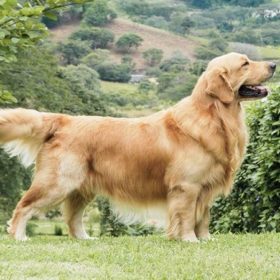 Golden Retriever
Golden Retriever Belgian Shepherd Tervuren
Belgian Shepherd Tervuren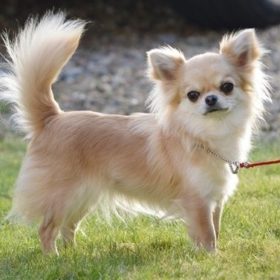 Chihuahua
Chihuahua Border Terrier
Border Terrier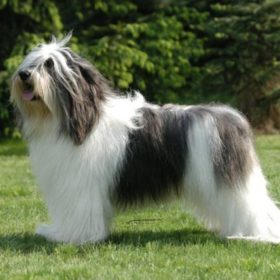 Polish Lowland Sheepdog
Polish Lowland Sheepdog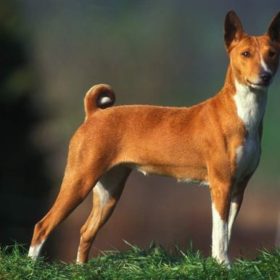 Basenji
Basenji